The turbo 911 Carrera S Cabriolet from Porsche comes without the ‘turbo’ badging. Yet, it offers a jaw-dropping performance with more power and torque
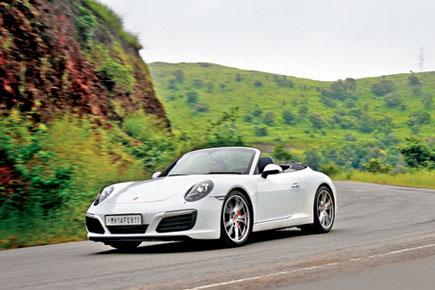

Porsche now has two turbocharged-3.0-litre six-cylinder engines in its portfolio. On the rump? A humble ‘911’. Raise that and there’s a little silver badge that says ‘3.0 S’. Still no ‘turbo’. Not only can you say you have a 911 turbo but you also get 20 more horses, 60 more drehmoments and 0.8 km/l more than a 3.8.
The exterior on the new Type 991.II somehow looks even smoother and flowing. The biggest visible changes are the 3D tail-lamp clusters and the vertical grille slats on the engine cover. There’s a fair bit of carbon-fibre too.
Porsche has chipped away at the weight using multiple grades of steel, aluminium and magnesium in construction. It has saved 1.5 kg thanks to a new aluminium alloy for the crankcase, and another two kilos with a composite oil pan. The Cabriolet, mechanical tent and all, brings the total weight to just 1,530 kg. Inside, the bucket seats, the wheel borrowed from the 918 Spyder, complete with a rotary drive-mode selector, and the paddle-shifters that seem to be made of baby aluminium, are all very racy and set up to excite you.
This is a Porsche, and there are several features that you will desperately want, most of which aren’t part of the standard kit. The Sport Chrono package is the first usual suspect. Then there’s the nose-raiser that increases ride height at the front axle by 40 millimetres at speeds of up to 60 km/h. There’s more advanced stuff on offer, optionally. The rear-axle steering function, earlier restricted to the spec-sheet of the Turbo S or GT3 RS, is now available on the Carrera S. The S also gets wider 11.5x20-inch rear rims wrapped in Turbo-spec 305/30 ZR20 P-Zero rubber.
The new 2,981-cc boxer-six, losing over 800 cc of displacement over its predecessor, puts out a fun-tillating 420 PS of peak muscle, 500 Nm of peak twist between 1,700 and 5,000.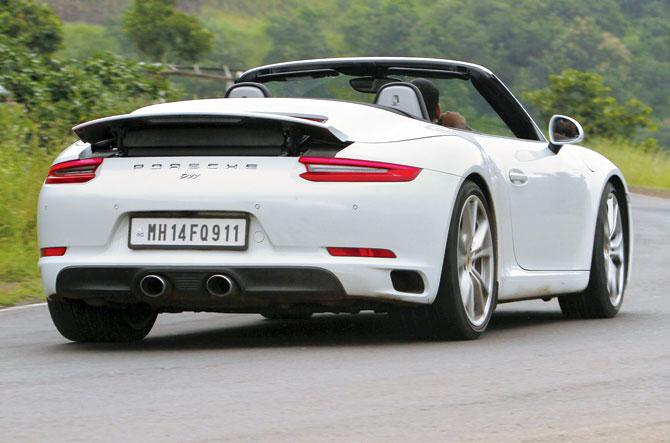
The biggest visible changes are the 3D tail-lamp clusters
We started off in ‘Normal’ mode so the engine had a low-pitch bass note all the way, except when it eventually shifted up to fourth and went silent, because at 50 km/h the engine may as well be hibernating; 911s sleep-walk faster than our traffic moves. The Porsche Doppelkupplung (PDK) has been tweaked to be even sharper. The soundtrack in third is enough to send you into a deeper trance the longer you keep your foot down.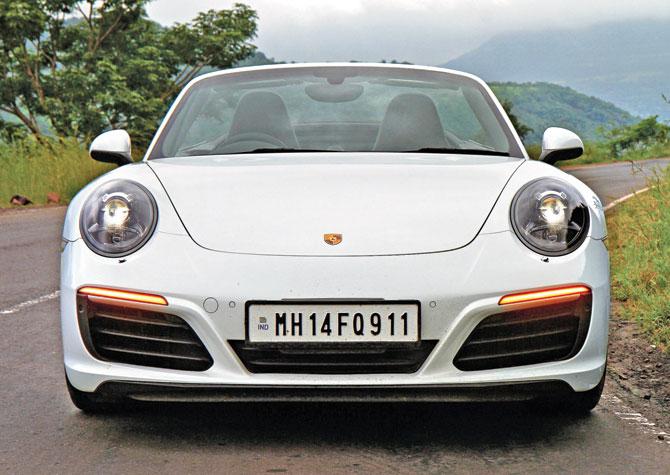
The design of the car is smooth, flowing, and so typically, Porsche
The acceleration isn’t brutal per se, but it does feel quite unforgiving. This car with 420 PS can make bigger, more powerful near-600-PS cars cry. Porsche says that where more air was more power earlier, the disadvantage was that the air "heated up during compression". The new geometry in the expansion manifold reverses the principle. "The expansion phase is used in front of the combustion chamber — because the air cools down when it expands."
The dash from zero to 100 km/h is done and dusted in 4.5 seconds; the needle hitting 8k on the way up. There’s a tiny nub of a button in the middle of the drive-mode selector. Push that and you get an instant burst and more wrath-of-god sound to go with it. The quarter-mile was accomplised in a little over 12 seconds and we were doing almost 190 at the time. The claimed top whack, roof up, is 304 km/h.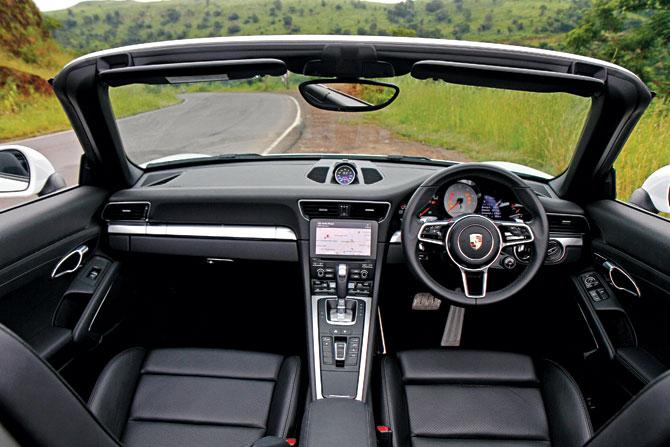
The ergonomically engineered interior looks great too. pic/Sanjay Raikar
The essence of a sports car is not just how it feels to drive but what it makes you feel when you drive it. First, the steering lets you feel every bit of the road surface. It is communicative like few others. The suspension plants it down. It does just enough to ensure you put in an effort and earn that smile. The 911 S wiggles and gives you split-second panic attacks every time you’re a grinning ape on the throttle. There’s a tiny bit of GT2 in there.
It will give you speed. It will give you timings. But it will make you work for them and feel like you’re responsible for achieving them. The human connection is there. The car can be as wild or as docile as you want it to be. There is traction control but, at times, you would go paranoid and lose your mind looking for that flicker of orange in the console before the car actually loses grip. It's marvellous!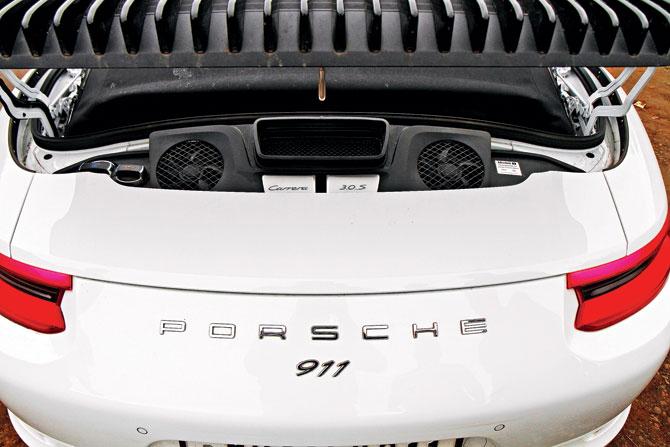
The legendary 911 badge says it all, no ‘turbo’ badge though
It’s the sound of the mechanical cohesion, of metal, air and petrol working together in the 3.8, now, in the 3.0; with the added sound of air-locks in operation as the blowers spool up. It’s more bass but it’s just as raw. There still remain just a handful of cars that can hold a candle to the 911. Dr Porsche got it right 53 years ago. Now it’s just about being cleaner and more powerful. Let the designers do the 961 or 717 or whatever’s next. Leave this one alone.
ADVERTISEMENT
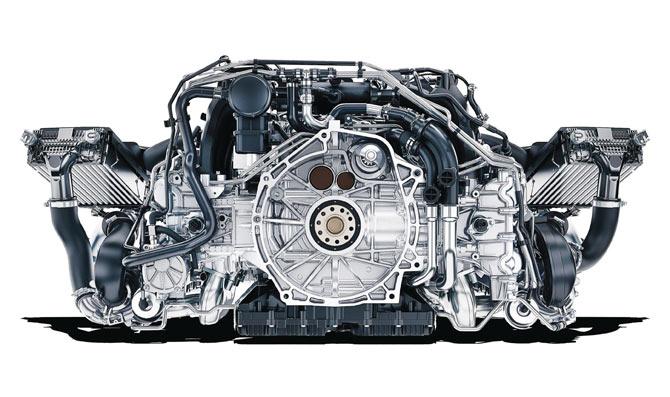
The 3.0-litre six-cylinder boxer plant is a thing of beauty
 Subscribe today by clicking the link and stay updated with the latest news!" Click here!
Subscribe today by clicking the link and stay updated with the latest news!" Click here!







